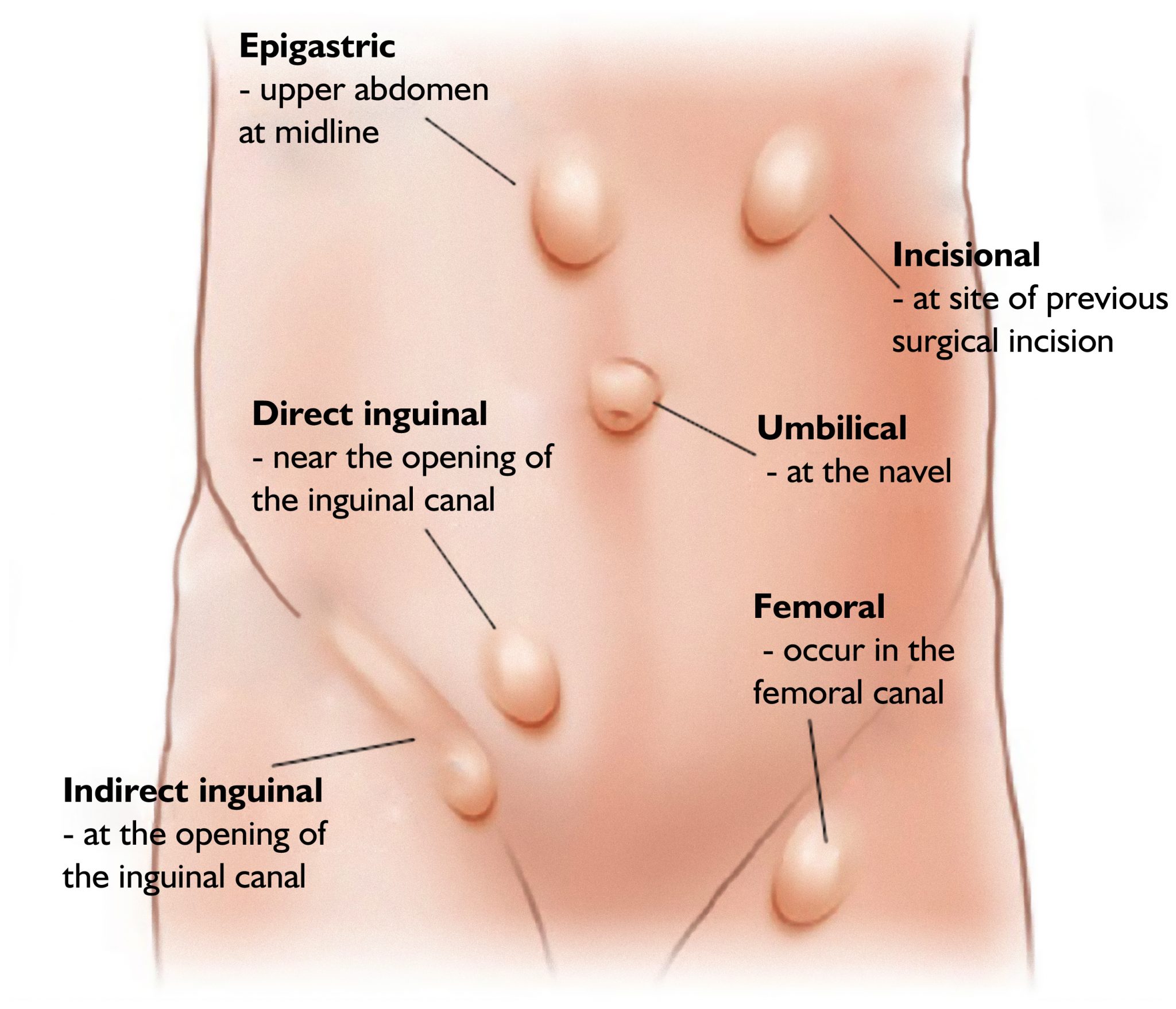A hernia occurs when an organ or fatty tissue squeezes through a weak spot or opening in the surrounding muscle or connective tissue. This can result in a noticeable bulge or lump. Hernias can occur in various parts of the body, but they most commonly affect the abdominal area.

The most common types of hernias include:
1.Inguinal Hernia: This type of hernia occurs when part of the intestine pushes through a weak spot in the abdominal wall, often in the inguinal canal (the passage that carries the spermatic cord in men). Inguinal hernias are more common in men than in women.
2.Femoral Hernia: Similar to inguinal hernias, femoral hernias occur when tissue protrudes into the femoral canal, a passage near the groin. They are more common in women.
3.Umbilical Hernia: This type of hernia occurs when part of the intestine or abdominal lining pushes through the abdominal wall near the belly button. It is more common in infants but can also affect adults.
4.Incisional Hernia: This type of hernia can occur at the site of a previous surgical incision, where the abdominal wall has weakened.
5.Hiatal Hernia: Unlike the other types, a hiatal hernia involves the stomach pushing up through the diaphragm into the chest. This can cause acid reflux and other symptoms.
Hernias often result from a combination of muscle weakness and strain, which can be caused by various factors such as aging, injury, surgery, or chronic coughing. Symptoms of a hernia may include a visible lump or bulge, pain or discomfort, and sometimes difficulty with bowel movements.
Treatment for a hernia may involve lifestyle changes, such as weight loss and avoiding heavy lifting, or it may require surgical intervention to repair the weakened area. If you suspect you have a hernia or are experiencing symptoms, it's essential to consult with a healthcare professional for a proper diagnosis and appropriate treatment plan.
